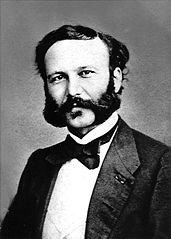Introduction
In the early 1860s, rules of warfare were either regulated by rulers and commanders or agreed on between belligerents in order to satisfy contemporary needs and convenience. While in some cases they aimed to protect vital resources such as well, or persons such as soldiers and defenceless non-combatants, they did not usually prohibit practices that modern society would find unacceptable.
The Evolution of International Humanitarian Law
The evolution of International Humanitarian Law and its understanding as to how morals have changed the war can be further divided into ancient origins (17th Century-19th Century) to the present-modern day laws.
Ancient Origins
Feudal Times
| 2,000 years ago, St. Augustine first came up with the concept that there were “just” and “unjust” wars (ideas based on Christianity). |
| These ideas served historically as the “litmus” test. A war is considered “just” if it is: 1. Based on clear; legitimate or just aims 2. Undertaken by the legitimate authority-such as a recognised government. 3. Not undertaken out of hate, greed or other base motives. 4. Prosecuted only as a last resort. 5. Likely to succeed. |
Feudal Times – the 1600s (17th Century)
| From feudal times to the 17th century (1600s), armies were largely MERCENARY. – Often brutal, undisciplined and would fight for who could pay the most. – They had to “live off the land” and were often not paid on time. – Thus, they were hard to manage.  |
| A big change in the evolution of International Humanitarian Law came when armies transitioned from mercenary to existing as function of the nation-state bureaucracy (1700s-1800s). |
1700s – 1800s (18th Century – 19th Century)
| Many changes in Western civilization impacted the evolution of International Humanitarian law: – Mercenary to National armies – The enlightenment – Humanism – Decline of the Church as a Political Leader – Rise of Nation-States |
| Soldiering became a profession (civilians were more “off limits” in war as a result) |
| Leaders learned that regularly paid and fed armies were better tactically and more cooperative. |
| A chain of command was established (battalions, regiments, etc.) |
| Customary Law was a full force, but unwritten. |
| Procedures were now established to punish officers (similar to court marshaling). |
| European countries got better at planning and managing war, thus were able to control much of the non-western world. |
| Organisation of the military proved to be successful in outwitting larger opponents. |
| Commercial and military contributions during the Industrial Revolutions changed how people planned and waged war. |
| Areas of discussion in the 1800s in terms of International Humanitarian Law: Limitations of Medical Advances during war/care for the wounded.Treatment of POWsSafety of soldiers who surrender |
| U.S. Civil War – 1st law written down |
Francis Lieber – appointment by a Union General to create a document outlining customary law for the U.S. army.  |
| His General Orders 100 – served as the official document for the U.S. army for 100 years! |
| Significance – helped with training soldiers so they could understand what was and was not acceptable. |
| International Conventions follow the U.S.’s example at Geneva and Hague. |
Swiss philanthropist Henri Dunant in 1862 wrote about the horrible conditions suffered by the wounded. |
| In Geneva, Switzerland, 12 European nations signed a “convention”/treaty. |
This would be revised and tweaked from 1864-1949 |
| In 1949 the United Nations formally accepted the convention. |
1900’s – Today
| 1899 in Hague – the U.S., Mexico, Japan, Persia, Siam, and 19 European nations signed a treaty. |
| Purpose, however, was not to end war because many new world powers had acquired power as a result of war. |
| After WWI, some tried to outlaw war, but it failed. |
| World organizations are created in the 1900s to promote world peace and International Humanitarian Law (IHL) (League of Nations and United Nations) |
| Genocide of the 1940s would challenge IHL like never before and also prove its necessity. |
| Nuremberg and the Nuremberg Principles did the work of punishning some Nazi leaders and set an important precedent. |
| Eisenhower’s Cold War Military Industrial Complex speech warned of things to some (the privatization of war, PMCs etc.) |
| International Humanitarian Law is an ongoing process that many people around the world feel strongly about promoting. |
| There is more awareness of human rights as compared to International Humanitarian Law. |
Controversies
Some argue that powerful nations hold themselves above International Humanitarian Law. However others argue that International Humanitarian Law is contradictory to the nature of war and that war is part of human nature.
Conclusion

International Humanitarian law evolved to international peace and security. The whole mankind cannot be subjected to the fear of unlimited war with maximum cruelty and ruthlessness. Without legal constraints, war may degrade into utter barbarism. Moreover, after the termination of such barbaric war, the restoration of peace between the parties that have fought each other with such ruthlessness may become virtually impossible.

